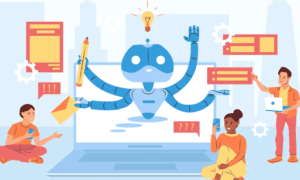Running a business today depends on technology more than ever. Computers, software, mobile devices, and cloud tools have become part of daily work. When everything works well, employees can stay productive and customers get the service they expect. But when technology fails, even for a short time, it can cause frustration, downtime, and loss of revenue. This is where an IT Help Desk becomes essential.
An IT Help Desk is the central point where employees and customers can get support for technical issues. Instead of wasting hours trying to fix problems on their own, your team has quick access to experts who can solve them efficiently. Let’s explore what an IT Help Desk really is, how it works, and why your business cannot afford to overlook it.
What Is an IT Help Desk?
An IT Help Desk is a service designed to provide assistance with technology-related problems. Think of it as the “frontline support team” that helps employees resolve issues with hardware, software, or network systems. The role of an IT Help Desk is not only to solve problems when they occur but also to guide users with preventive measures so they can avoid future disruptions.
Typical tasks include:
- Resetting forgotten passwords.
- Fixing connectivity problems.
- Installing or updating software.
- Solving email or communication tool errors.
- Troubleshooting hardware failures.
Beyond fixing these common issues, the IT Help Desk plays a key role in keeping your entire business running smoothly by ensuring systems stay reliable and accessible.
Why Businesses Rely on an IT Help Desk
Technology downtime can cost companies thousands of dollars per hour. Without a dedicated support system, minor issues can snowball into major disruptions. An IT Help Desk reduces this risk by providing quick and professional assistance.
Some major benefits include:
- Improved productivity: Employees don’t waste time figuring out technical problems alone.
- Centralized support: All issues go through a single point, making them easier to track and resolve.
- Faster problem resolution: Trained technicians can diagnose and solve issues more effectively.
- Better customer experience: Reliable systems mean better service delivery to your clients.
- Scalability: As your company grows, the IT Help Desk adapts to handle more requests.
By having a structured support system, businesses can focus on growth and innovation rather than being slowed down by IT headaches.
How an IT Help Desk Works
The process usually follows a structured workflow. When an issue occurs, employees submit a ticket through email, chat, or phone. The IT Help Desk then prioritizes the request based on urgency. For example, a system-wide outage gets more attention than a single password reset.
The help desk team may use different levels of support:
- Tier 1: Handles basic issues like account access or software questions.
- Tier 2: Deals with more complex technical problems that require in-depth troubleshooting.
- Tier 3: Advanced specialists who resolve rare or critical issues.
This layered approach ensures that problems are solved efficiently without overwhelming the support team.
The Role of Managed IT Services
Many companies today choose to outsource their IT support instead of managing it internally. This is where Managed IT Services come into play. With Managed IT Services, businesses get access to a complete team of experts who can monitor systems 24/7, provide remote assistance, and ensure security.
Managed IT Services often include:
- System monitoring and maintenance.
- Cloud management and data backups.
- Cybersecurity protection.
- Network optimization.
- Access to an IT Help Desk for employees.
By combining proactive monitoring with responsive help desk support, Managed IT Services keep businesses safe, efficient, and productive.
Why a Help Desk Complements Managed IT Services
Some business leaders think Managed IT Services are enough on their own. While they do provide a broad level of technology management, having an IT Help Desk ensures that employees can get immediate, human-level support.
For example, if your email system suddenly stops working, the monitoring tools from Managed IT Services might detect the issue. But your employees still need someone to walk them through alternative solutions until the system is back online. The IT Help Desk provides that hands-on assistance, making the combination of services powerful and complete.
Strategic Guidance with vCIO Services
Beyond fixing problems, businesses also need a long-term technology strategy. This is where vCIO Services (Virtual Chief Information Officer) are valuable. A vCIO helps companies align their technology with business goals.
Some ways vCIO Services add value:
- Creating IT roadmaps for growth.
- Planning budgets for technology investments.
- Identifying risks and planning security improvements.
- Advising on which tools and platforms best fit your industry.
When paired with an IT Help Desk and Managed IT Services, vCIO Services ensure that your business is not just reactive but also proactive. Instead of only fixing problems, your company is guided toward smarter, more strategic use of technology.
How an IT Help Desk Supports Business Growth
As your business grows, so do the demands on your technology. More employees, more devices, and more software all mean more potential problems. Without a dedicated IT Help Desk, these issues can pile up and cause delays.
An IT Help Desk provides:
- Scalability: The support team can grow alongside your business.
- Documentation: Common issues are tracked and documented for faster resolutions in the future.
- Employee satisfaction: Staff can focus on their jobs instead of IT frustrations.
- Cost savings: Fixing problems quickly reduces downtime expenses.
Growth is much smoother when the technology behind it is reliable and supported.
Why Every Business Needs IT Help Desk Support
Some businesses may think they can “get by” without dedicated support. Maybe a tech-savvy employee helps when issues arise, or the company only calls for outside help during emergencies. While this might work temporarily, it is not a sustainable or efficient approach.
Relying on a structured IT Help Desk brings peace of mind. Employees know exactly where to go for help, and leadership can rest assured that downtime is minimized. Combined with Managed IT Services for overall monitoring and vCIO Services for strategic planning, the IT Help Desk becomes part of a complete solution that allows businesses to thrive in a technology-driven world.
Final Thoughts
Technology is no longer just a support tool; it is the foundation of modern business. An IT Help Desk ensures that employees can work without unnecessary delays, customers receive uninterrupted service, and leaders can focus on growth instead of technical roadblocks.
When combined with Managed IT Services for ongoing system management and vCIO Services for long-term planning, your company gains not only support but also strategy. This powerful trio keeps your business running smoothly today while preparing it for the challenges of tomorrow.
In short, an IT Help Desk is not just a convenience—it is a necessity. Investing in it now will save your business time, money, and stress in the long run.



































